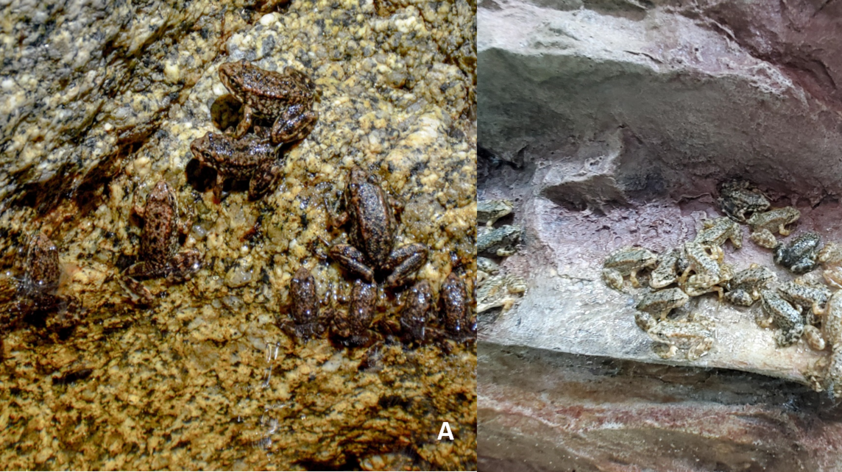
Backgrounds and enrichment
An extremely important construct of any ex-situ management program is to mirror the ex-situ environment to that of the native landscape. Not only does this help in facilitate general well-being of the animals born and raised outside of their native environment, but it can have both a significant impact on breeding and lead to an increased survival of animals reintroduced into the wild. Understandably, raising animals that have never experienced their native habitat in an ex-situ environment that matches that landscape will allow us to prepare them for their reintroduction. Some important things to consider include copying daylight cycles, ambient temperatures, hibernation cycles and food availability. All of these abiotic factors play a very important role in breeding, and over the years the implementation of these parameters ex-situ has led to the successful breeding of adult mountain yellow-legged frogs (MYLF) in human care, such that hundreds of animals can be reintroduced each year.
Until recently, certain factors about the mountain yellow-legged frog habitat were not considered, such as water flow and reintroduction site landscape; factors that can have a serious impact on reintroduced animal survival. The mountain yellow-legged frog environment is dominated by rocky outcrops, fast flowing water, waterfalls and small pools. In fact, upon release many animals have been seen swimming headfirst into the stream flow, taking refuge underneath waterfalls and climbing and hiding in the rocky outcrops that enclose the habitat. In the past year, both water flow enrichment and habitat matching has been addressed for the ex-situ populations of MYLF at San Diego Zoo Global. More specifically, we examined fast flowing water on animal morphology and survival, and implemented incredible three-dimensional backgrounds that look and feel very similar to the rocky outcrops of the natural environment. Already we’ve seen some success with our stream enrichment training—the animals that grew up in a fast flowing environment seemed to fare better after reintroduction.
After reintroductions were performed this year, we were able to install incredible rocky backgrounds in a majority of our tanks, primarily thanks to a generous donation from Ocelots. Almost immediately upon placing animals into the tanks with background we saw their use. The first to get to try out the backgrounds were our adults. Immediately, two or three adults climbed and situated themselves on near vertical ledges underneath the heat lamp. After some of our tadpoles started morphing they also got to experience the backgrounds. Not unlike the adults and also similar to what we would see in the field, the morphs started to climb and sit on the backgrounds. We tend to see a lot more animals basking and sitting out of the water thanks to these new backgrounds then we have before. We are looking forward to seeing how these backgrounds will help prepare our animals for their natural habitat.













